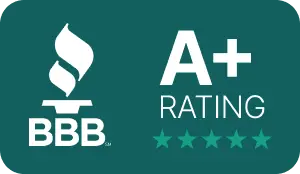The Probate Cash Crunch
Probate law exists to protect creditors, confirm titles, and honor a decedent’s wishes—but it rarely protects an heir’s wallet. While courts validate wills, appraise property, and publish creditor notices, heirs face mortgage payments, tuition deadlines, and urgent property repairs. For many families, an immediate estate loan becomes the tool that keeps a house insured, a business afloat, or medical bills current until the judge signs the final distribution order.
What Makes an “Estate Loan” Different?
An estate loan is a short-term, non-recourse advance made directly to the estate. The personal representative signs on behalf of the estate, courthouse approval is often required, and repayment comes off the top before beneficiaries split the residue. Because the lender’s collateral is the entire estate—not a single heir’s share—rates trend lower than assignment-style funding.
That distinction matters when families weigh an inheritance advance, probate loan, or personal loan cost breakdown and discover how collateral, underwriting, and recourse shift the true APR. Linking the loan to estate assets spreads risk, so fees are usually closer to low-double digits than the high-teens percentages common in heir-only advances.
Mapping Loans to Real Assets
Real property drives most estate-level borrowing. A vacant home requires insurance, lawn care, maybe even a roof replacement before it can command top dollar. The executor can pledge the property for an estate loan, preserving value without asking heirs to drain savings. By contrast, refinancing in an heir’s personal name carries a full mortgage qualification. Estate loans vs. traditional mortgages diverge sharply on credit pulls, debt-to-income ratios, and closing costs, letting heirs sidestep bank underwriting and still unlock liquidity.
Speed Still Rules the Day
Families in crisis rarely care about tax deductibility or amortization schedules; they want to know how fast they can get a probate or inheritance advance. Estate loans typically close inside two to three weeks—the time it takes to collect death certificates, letters testamentary, a title report, and, if required, a judge’s blessing. Where the court keeps a standing order for modest advances, the timeline compresses to mere days. Personal inheritance advances, which skip court entirely, can wire in 48 hours or less but at a higher cost. Speed and price travel opposite directions; our advisors model both so heirs pick the right trade-off.
Reading the Probate Clock Honestly
Choosing loan size and term requires a sober estimate of how long it really takes to receive an inheritance in your jurisdiction. A straightforward estate with liquid brokerage accounts might distribute in nine months; a multi-state estate holding commercial real estate, delinquent property taxes, or a contested will can push past three years. Because estate loans accrue fees until payoff, over-borrowing against an optimistic timeline is the fastest path to sticker shock. Prudent executors match advance amount to worst-case duration, then negotiate a repayment cap that softens the blow if court calendars drag.
Advance, Assignment, or Loan? Spotting the Practical Differences
The funding marketplace offers heirs everything from micro-cash advances on a single bequest to six-figure loans collateralized by the entire estate. Cash advances on an estate vs. inheritance advances appear similar—both wire money in days and require no personal credit—but the paperwork tells a different story. An estate advance binds every beneficiary indirectly because repayment comes off the top; an inheritance advance binds only the signing heir, shielding siblings from liability but often commanding a steeper rate to compensate for junior priority. Understanding that legal nuance keeps family harmony intact and prevents surprise lien notices at closing.
Crafting a Decision Framework
- Define urgency clearly. Are you covering fire insurance on a vacant home or funding a discretionary remodel? Urgent, value-preserving costs favor an estate loan; discretionary projects might wait.
- Audit collateral. Estates rich in real estate but cash-poor can leverage property for lower cost. Estates holding liquid securities may liquidate a small tranche instead of borrowing at all.
- Compare blended rates. Stacking a personal loan on top of estate carrying costs can eclipse the single-digit fees of a direct estate loan; a disciplined cost breakdown prevents hidden double interest.
- Gauge court cooperation. Some probate courts preapprove borrowing; others schedule full hearings. Filing requirements move loan timing from “days” to “weeks” and factor directly into fee schedules.
- Model best, base, worst scenarios. Ask your lender for three payoff illustrations so you see how loan balance and heir net proceeds change if probate extends past the average.
Negotiating Favorable Terms
A reputable probate-focused lender negotiates, not dictates. Look for:
- Flat-fee or capped multiple structures rather than open-ended compounding.
- Clear non-recourse language specifying that repayment comes only from estate assets, never personal wages.
- No prepayment penalties. If the estate sells property sooner than expected, early payoff should lower total cost, not raise it.
Executors should also request an itemized settlement statement up front. Transparency on underwriting fees, document preparation, and court filing costs eliminates last-minute surprises.
Balancing Family Dynamics
Money can fray even close families. Some heirs welcome a loan that lifts cash strain off everyone; others fear their inheritance shrinking before it reaches them. Communicating early—ideally at the first executor meeting—heads off conflict. If consensus proves elusive, splitting strategies may work: the estate takes a modest loan to keep property protected, while a liquidity-pressed heir chooses a separate assignment against her own share. The key is aligning individual risk tolerance with the optimal product mix.
The Bottom Line: Liquidity as a Bridge, Not a Destination
Estate loans exist to solve a timing problem, not create permanent leverage. Used strategically, they preserve asset value, pay unavoidable expenses, and relieve family stress without forcing fire-sale decisions. But like any financial tool, effectiveness hinges on disciplined sizing, transparent pricing, and a realistic probate timeline. Pair those elements, and you transform an illiquid inheritance into a flexible resource—one that keeps life moving forward while the legal process finishes its slow, necessary work.








